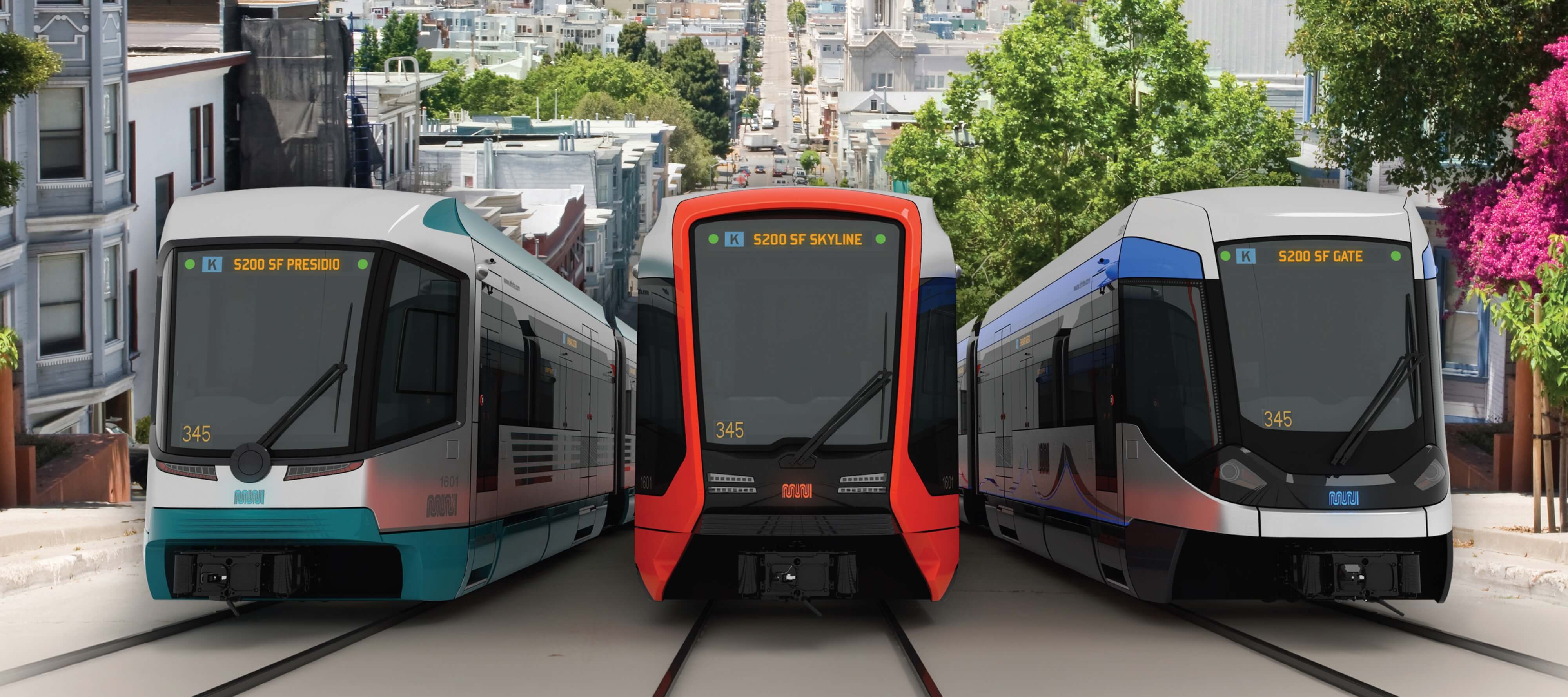
New Plan For M-Ocean View Subway Line Unveiled
Nearly 45 years ago, Muni trains boldly went where no San Francisco train had gone before: underground.
That underground network travels underneath Market Street and Twin Peaks. But there it stops.
Trains west of those hills unearth at West Portal Station, mixing with cars, pedestrians and more. Planners say that slows the subway systemwide.
“I think we built half a rapid transit system,” Liz Brisson, told the San Francisco Examiner, “now we need to build the other half.”
Brisson is project manager of the proposed 19th Avenue/M-Ocean View Subway, at the San Francisco Municipal Transportation Agency. Though announced in various preliminary stages the last few years, Thursday the project saw a new milestone.
SFMTA unveiled the newest design of the subway — one that would see the M-Ocean View train dip down from West Portal Station into the earth.
The train would remain underground through the rest of its route to Parkmerced.
The previous plan ran the train underground mainly underneath 19th Avenue, but not at West Portal or at the line’s end by Parkmerced.
“This is a dramatic increase in the scope of the project,” Brisson said.
It’s also a dramatic increase in cost. The project is estimated to run $2.5 billion to $3 billion. The last time San Francisco ventured to build a new train tunnel of this magnitude was the Central Subway, the hotly contested linkage between Union Square and Chinatown.
Still, tunneling throughout is a hope of many in The City, including Supervisor Scott Wiener, and his much-touted Subway Master Plan. He strongly supports bringing the M-Ocean View underground.
The new subway would serve the thousands of residents of the Parkmerced residential area, which is now expanding. It would also serve San Francisco State University students, Stonestown Galleria’s shoppers, neighbors in Ocean View and beyond.
Those first three entities — Parkmerced, SFSU and Stonestown — have chipped in about $140,000 towards planning the subway, alongside funds from the SFMTA and San Francisco County Transportation Authority.
Neighbors came to see the fruit of that planning Thursday at the Seven Hills Conference Room at San Francisco State University.
Brisson made her case to the public. Tunneling the M train would garner five minutes of travel time per trip — time that adds up fast, Brisson said. Not having to cross 19th Avenue, or venture through West Portal, also means the trains would escape cross car traffic and pedestrians.
Daily, 72,000 cars cross 19th Avenue, according to Caltrans data, circa 2013. According to SFMTA data, the week before the meeting there were six traffic incidents where cars blocked the M train on 19th avenue.
That’s four hours of delays in just one week.
In 2015 total, SFMTA data shows at least 26 incidents of autos on the tracks on 19th Avenue, resulting in 11 hours of service delays.
These would vanish if the train were underground, Brisson said.
Once underground, four-car platforms could be built, doubling capacity. Right now the M train only runs two cars at a time, according to the SFMTA.
Dozens of people milled about Thursday at SFSU, reading standing boards attesting to those arguments. Some came up to the microphone to ask Brisson about San Francisco’s potential new subway.
Mani Drayton, who lives near the M line, said five minutes sounded like too small a gain for $2.5 billion. He also worried construction would lead to carbon fumes, harming residents.
Clarence Chen, a 17-year-old Lowell High School Student (a school also along the M line) told the San Francisco Examiner “It will help everyone in San Francisco.”
Yvonne Ne, a mostly Cantonese-speaking neighbor from Ocean View, said for 10 years she’s taken the M-Ocean View downtown, to shop for produce in Chinatown. “Crowds, crowds, no place to stand,” she said, in English.
A member of the Chinese Progressive Association translated between her and the Examiner, and Ne said she doesn’t like riding the M line now — but would be much happier should it speed up.
That future may be far off. Right now, the project is in the “pre-environmental study” phase, according to the SFMTA.
Read the Article from the San Francisco Examiner